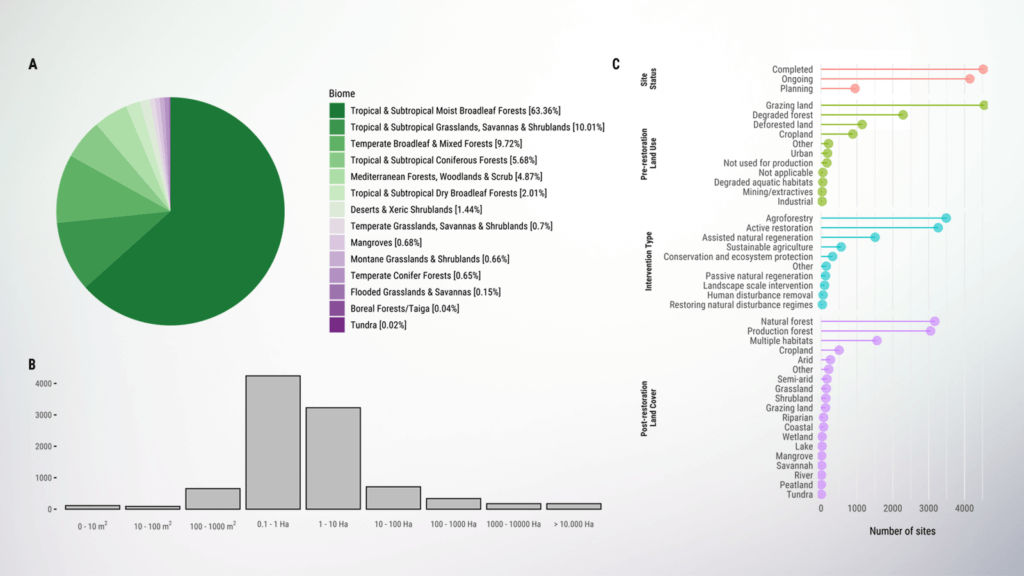Nature presents a fascinating duality. It is simultaneously the totality of all life on Earth and the foundation for all the life it contains. As humans, we are both part of nature and reliant on it as our life-source – for food, shelter, health, and well-being.
Today, only three percent of Earth’s ecological communities remain intact and 75 percent of natural land is degraded. This is why the chorus of voices warning of the dangers of biodiversity loss, pollution, and climate change is getting larger and louder. There’s broad scientific consensus that we must take major action by 2030 to halt and reverse biodiversity loss and transition away from fossil fuels in order to avoid the worst consequences.
In this context, the global restoration movement is gaining momentum. To support the movement, Crowther Lab developed Restor, an independent science-based platform offering restoration and conservation organizations connectivity, transparency, and ecological insights. A reflection published in the journal One Earth offers an overview of Restor’s functions and capabilities, including how it facilitates the two-way exchange of environmental data between scientists and restoration practitioners.
Restor users can draw a polygon on the platform to access scientific insights about a particular area. Credit: Restor
Analyses of data from Restor’s public database offer researchers new capabilities to study global restoration progress and track trends over time. At the time of the reflection’s publication, Restor’s growing database of restoration sites comprised 272 sites in Oceania, 726 sites in Asia, 910 sites in Europe, 954 sites in Africa, and 6,840 sites across the Americas (6,700 in Latin America and the Caribbean and 140 in Northern America).

A figure from the One Earth reflection offering an overview of Restor’s public project database: (A) shows the distribution of sites across 14 terrestrial biomes; (B) shows site sizes; (C) describes specific conservation or restoration interventions based on site metadata.
The heavy concentration of sites in Latin America points to the region’s enormous restoration potential, as the region is home to vast forest cover but is grappling with widespread deforestation. Currently, most sites are working to restore forests; agroforestry and production forest restoration each account for roughly a third of total restoration sites. As nature-reliant business approaches, these interventions align with the reflection’s premise that “protecting and restoring nature requires that nature becomes the economically sustainable option for local communities across the globe.”
In that light, it also makes sense that a sizable majority of the sites in Restor’s public database are small, in the range of .1 to 10 hectares. While top-down policy and investment are important for enabling and expanding restoration efforts, at its core, restoration is a bottom-up movement. As this movement continues to grow, and as more ecosystems and intervention types are represented on Restor, scientists will gain insights into global restoration trends and impacts.
Over time, this will lead to a better understanding not only of the scale and distribution of nature conservation and restoration, but also of how much carbon these efforts are capturing, their effects on biodiversity, tree cover, and water resources, as well as their socioeconomic impacts. Analysis of Restor’s public database will offer a picture of the restoration movement that can spur investment, demonstrate best practices, and reveal how partnering with nature supports life.
